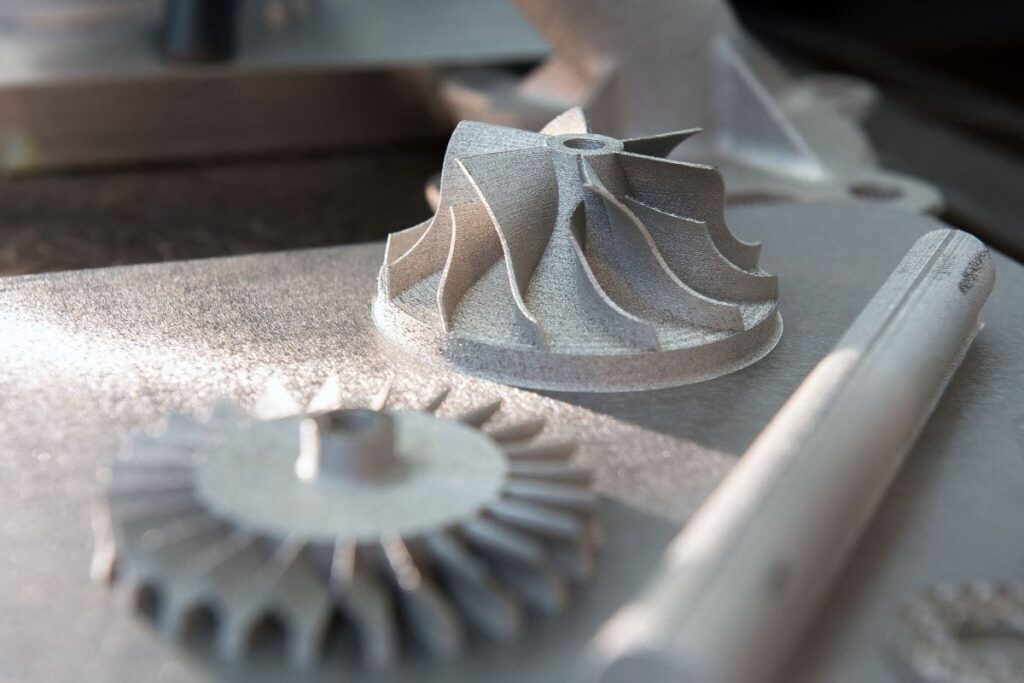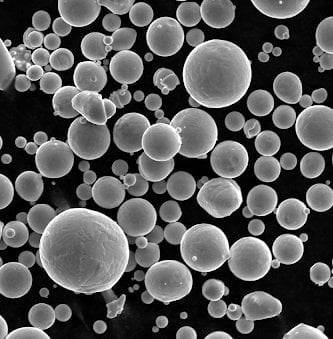3D 프린팅용 440C 스테인리스 스틸 파우더: 종합 가이드
목차
개요
440C 스테인리스강은 뛰어난 강도, 경도 및 내마모성으로 잘 알려진 마르텐사이트계 스테인리스강입니다. 최근 몇 년 동안 440C 스테인리스 스틸 파우더는 3D 프린팅, 특히 고성능 부품을 요구하는 산업에서 큰 인기를 얻고 있습니다. 이 문서에서는 3D 프린팅용 440C 스테인리스 스틸 파우더의 특성, 용도, 사양, 공급업체 등을 살펴보며 440C 스테인리스 스틸 파우더의 세계에 대해 자세히 알아봅니다.

440C 스테인리스 스틸 파우더 유형, 구성 및 속성
| 속성 | 설명 |
|---|---|
| 구성 | 440C 스테인리스 스틸 파우더는 주로 철, 크롬, 탄소, 몰리브덴으로 구성됩니다. |
| 경도 | 440C 스테인리스 스틸 파우더는 열처리 후 58~62 HRC에 이르는 뛰어난 경도를 자랑합니다. |
| 힘 | 일반적으로 약 1,200MPa의 높은 인장 강도와 약 1,000MPa의 항복 강도를 가지고 있습니다. |
| 내마모성 | 440C 스테인리스 스틸 파우더는 경도가 높고 열처리 과정에서 크롬 탄화물이 형성되어 내마모성이 뛰어납니다. |
| 내식성 | 오스테나이트 스테인리스 스틸만큼 부식에 강하지는 않지만 440C 스테인리스 스틸 파우더는 적당한 수준의 내식성을 제공합니다. |

440C 스테인리스 스틸 파우더 애플리케이션
440C 스테인리스 스틸 파우더는 다음과 같은 다양한 산업 분야에서 활용되고 있습니다:
| 산업 | 애플리케이션 |
|---|---|
| 항공우주 | 터빈 블레이드, 랜딩 기어 구성품 및 구조 부품 |
| 자동차 | 기어, 샤프트 및 기타 마모가 심한 부품 |
| 의료 | 수술 기구, 임플란트 및 치과용 도구 |
| 석유 및 가스 | 열악한 환경에 노출되는 밸브, 펌프 및 기타 구성 요소 |
| 툴링 | 절삭 공구, 금형 및 금형 |
사양, 크기 및 등급
440C 스테인리스 스틸 파우더는 다양한 사양, 크기 및 등급으로 제공됩니다. 일반적인 사양은 다음과 같습니다:
| 사양 | 설명 |
|---|---|
| ASTM A666 | 스테인리스 스틸 분말 야금 구조 부품의 표준 사양 |
| ISO 3091 | 스테인리스 분말 야금 재료에 대한 국제 표준 |
| MPIF 표준 35 | 적층 제조에 사용되는 금속 분말에 대한 표준 |
440C 스테인리스 스틸 파우더의 크기는 일반적으로 15~150미크론입니다. 440C 스테인리스강 분말의 등급은 다음과 같습니다:
| 등급 | 설명 |
|---|---|
| 440C | 강도, 경도 및 내식성의 균형 잡힌 특성을 갖춘 표준 등급 |
| 440C 수정됨 | 내식성과 인성이 개선된 변형 등급 |
| 440C 고탄소 | 탄소 함량이 높아 경도와 내마모성이 강화된 등급 |
440C 스테인리스강 분말의 가격은 공급업체, 수량, 입자 크기 등의 요인에 따라 달라집니다. 일반적으로 가격은 킬로그램당 $50~$200입니다.
장단점
| 장점 | 단점 |
|---|---|
| 뛰어난 강도와 경도 | 오스테나이트계 스테인리스강에 비해 낮은 내식성 |
| 우수한 내마모성 | 열처리를 제대로 하지 않으면 수소가 취화되기 쉽습니다. |
| 다양한 산업 분야의 다용도 애플리케이션 | 다른 스테인리스 스틸 파우더보다 비쌀 수 있습니다. |
자주 묻는 질문
| 질문 | 답변 |
|---|---|
| 440C와 다른 스테인리스 스틸 등급의 차이점은 무엇인가요? | 440C 스테인리스 스틸은 다른 등급보다 탄소 함량이 높기 때문에 경도와 내마모성이 향상됩니다. |
| 440C 스테인리스 스틸 파우더는 모든 3D 프린팅 공정에 적합합니까? | 440C 스테인리스강 분말은 주로 레이저 분말 베드 용융(LPBF) 및 전자빔 분말 베드 용융(EBPBF) 공정에 사용됩니다. |
| 440C 스테인리스 스틸 파우더의 내식성을 개선하려면 어떻게 해야 하나요? | 질화 또는 패시베이션과 같은 열처리 및 표면 처리를 통해 440C 스테인리스 스틸 파우더의 내식성을 향상시킬 수 있습니다. |
| 440C 스테인리스 스틸 파우더의 일반적인 용도는 무엇인가요? | 440C 스테인리스 스틸 파우더는 항공우주, 자동차, 의료, 석유 및 가스, 공구 산업에서 일반적으로 사용됩니다. |
| 440C 스테인리스 스틸 파우더에 적합한 공급업체를 선택하려면 어떻게 해야 하나요? | 공급업체를 선택할 때는 공급업체 평판, 제품 품질, 가격, 기술 지원 등의 요소를 고려하세요. |
결론
440C 스테인리스 스틸 파우더는 강도, 경도 및 내마모성이 독특하게 조합되어 다양한 산업 분야의 고성능 부품 3D 프린팅에 이상적인 선택입니다. 다목적성과 적응성 덕분에 혁신의 한계를 뛰어넘고자 하는 엔지니어와 제조업체에게 유용한 소재입니다.
공유
페이스북
트위터
LinkedIn
WhatsApp
이메일
중국 칭다오에 본사를 둔 선도적인 적층 제조 솔루션 제공업체인 MET3DP Technology Co. 당사는 산업용 3D 프린팅 장비와 고성능 금속 분말을 전문으로 합니다.
관련 기사
Met3DP 소개
최근 업데이트
제품

3D 프린팅 및 적층 제조용 금속 분말
문의 정보
- 칭다오시, 산둥성, 중국
- [email protected]
- [email protected]
- +86 19116340731









